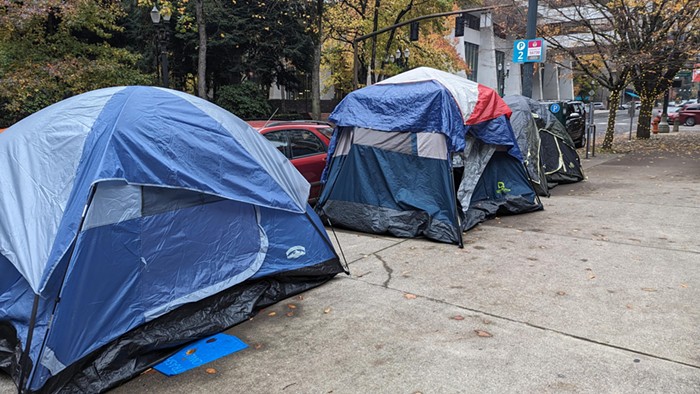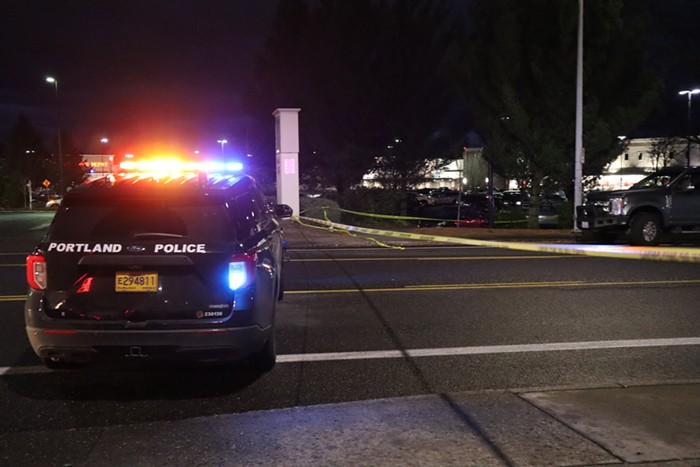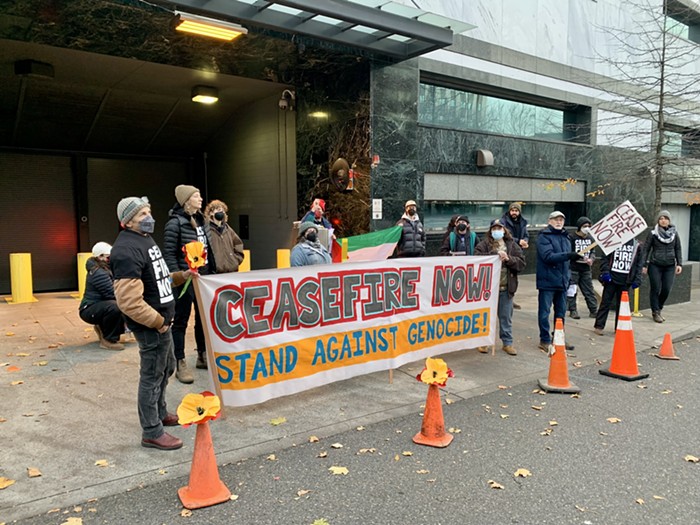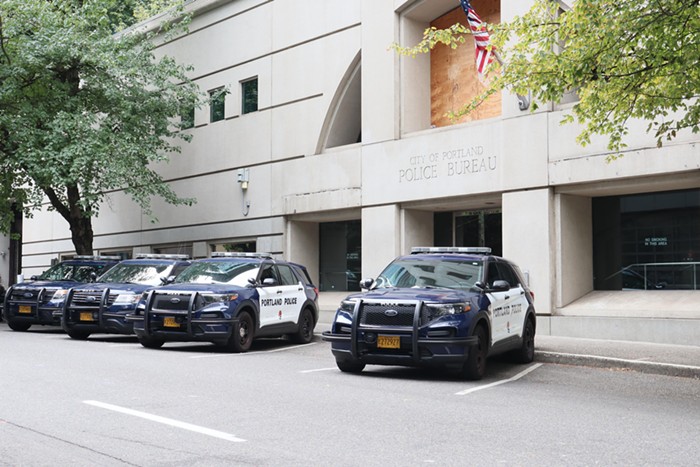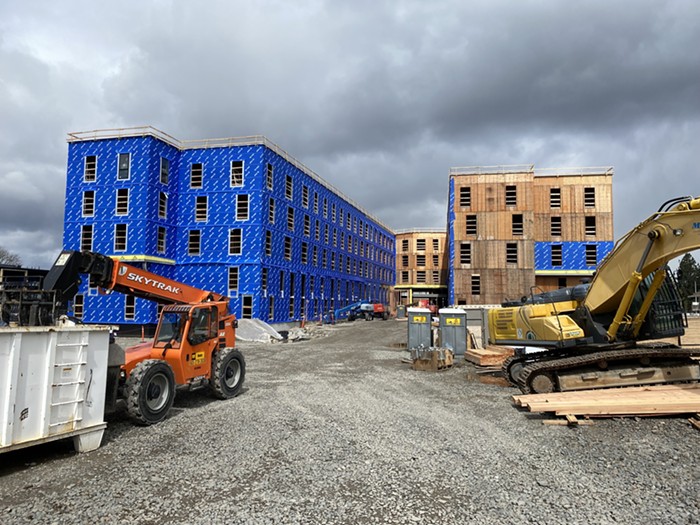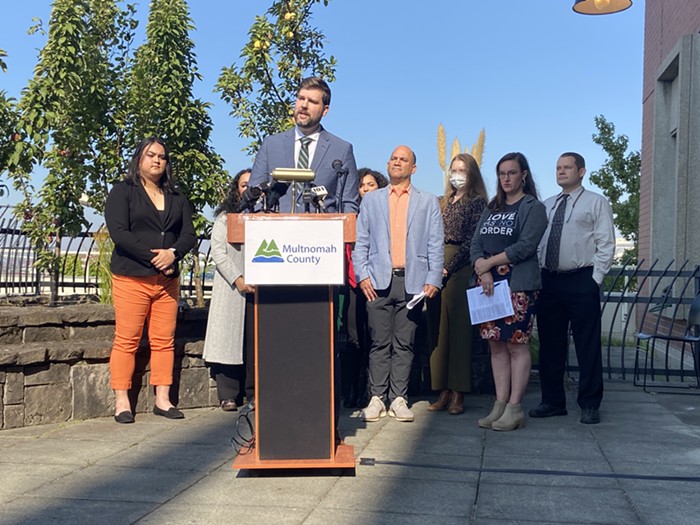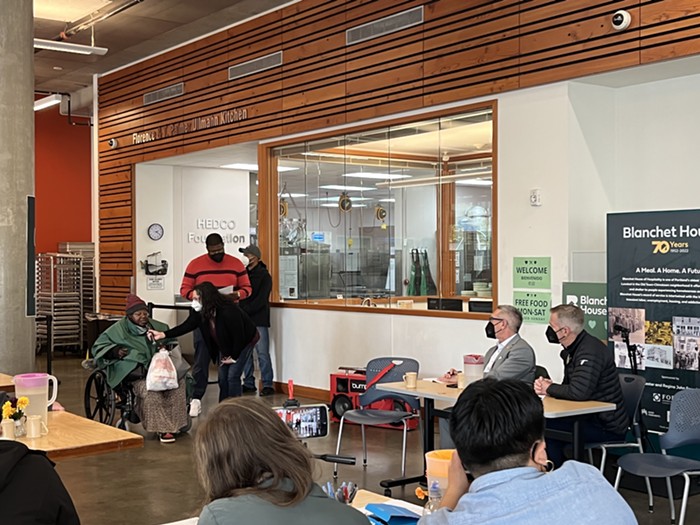
A class-action suit filed by seven Portland residents today—on behalf of potentially 6,000 more—says Bullseye knowingly spewed those chemicals into the air around its factory for decades, creating a "negligent, reckless, intentional, and/or abnormally dangerous" nuisance. The suit, filed in Multnomah Count Circuit Court, asks a judge to prevent the company from using arsenic, cadmium, and chromium until it's installed "adequate emissions controls equipment."
The plaintiffs also say Bullseye should remove harmful particles that might have amassed on their property, arguing the company "had no license or other authorization to enter on to or to leave contaminants on land
possessed by Plaintiffs and the class members." And the suit says Bullseye should pay for urine and blood testing for anyone who lives within 1.5 miles of its Portland factory, located at 3722 SE 21st.
The suit was filed by seven Portlanders who each live less than a mile from Bullseye: Alyssa Isenstein Krueger, Robert Krueger, Scott and Erin Meeker, Kelly Goodwin, Elizabeth Marre, and Darryl OBeirne. They all say they were caught off-guard by news of the pollution. Some fear their gardens or fruit trees are tainted (the state has already warned produce might be tainted). And Marre claims tests have turned up elevated cadmium in her blood. Her 5-month-old child has "high enough levels of inorganic arsenic that her doctor suggested further testing," the suit says.
The suit's not a surprise, of course. We reported last month that attorneys from Seattle firm Keller Rohrback, which filed the suit, had been speaking with nearby residents.
The lawsuit relies heavily on facts unearthed in news reports in the last month—for instance the fact that Bullseye hasn't used common pollution controls on its smoke stacks, as reported by the Mercury. And the fact the company lobbied heavily to free itself of federal pollution rules created in 2007 for glass operations, which the Oregonian reported.
"While Bullseye acted behind the scenes to avoid installing emissions controls, Plaintiffs and the class did not know and could not reasonably have discovered the harm Bullseye had caused and continues to cause them and their neighborhood until at least February 2016..." the suit says.
Bullseye was told February 1 that a month of air monitoring by the Oregon Department of Environmental Quality had found arsenic levels near Bullsye were 159 times state safety benchmarks. Cadmium levels were 49 times those benchmarks. And the DEQ is looking into how much hexavalent chromium Bullseye sent up its smoke stacks. All three of those metals are used to color the stained glass Bullseye is a national leader in supplying. They're also all carcinogens.
Since the pollution came to light, the Bullseye has ceased its use of the three materials, meaning air quality near the factory has likely improved. The lawsuit says that doesn't remotely allay plaintiff's concerns.
"Many of these materials precipitate out of the air, landing on soil or grass in backyards, playgrounds, and gardens," the suit says. "There, children playing may ingest the toxic materials directly and absorb them through their skin."
A request for comment sent to Bullseye wasn't immediately answered.
Read the whole complaint here.
MORE COVERAGE:
State Finds Alarmingly High Arsenic, Cadmium Levels Near Two SE Portland Schools
Too Cozy? A DEQ Air Quality Official Apparently Vacationed With An Attorney Representing Industry
Oregon DEQ Director Dick Pedersen Resigns Amid Air Pollution Concerns
Bullseye Glass Has Suspended Use of Arsenic and Cadmium Because of Air Quality Concerns
Portland Public Schools Is Ordering Air Tests Because of Arsenic, Cadmium Concerns: "We Need A Public Meeting"
Soil Near Bullseye Glass Contains Arsenic and Cadmium—And Other Things Officials Told Parents Thursday
Essential Pollution Controls Lacking at Two Glass Plants Blamed For Cadmium Emissions
